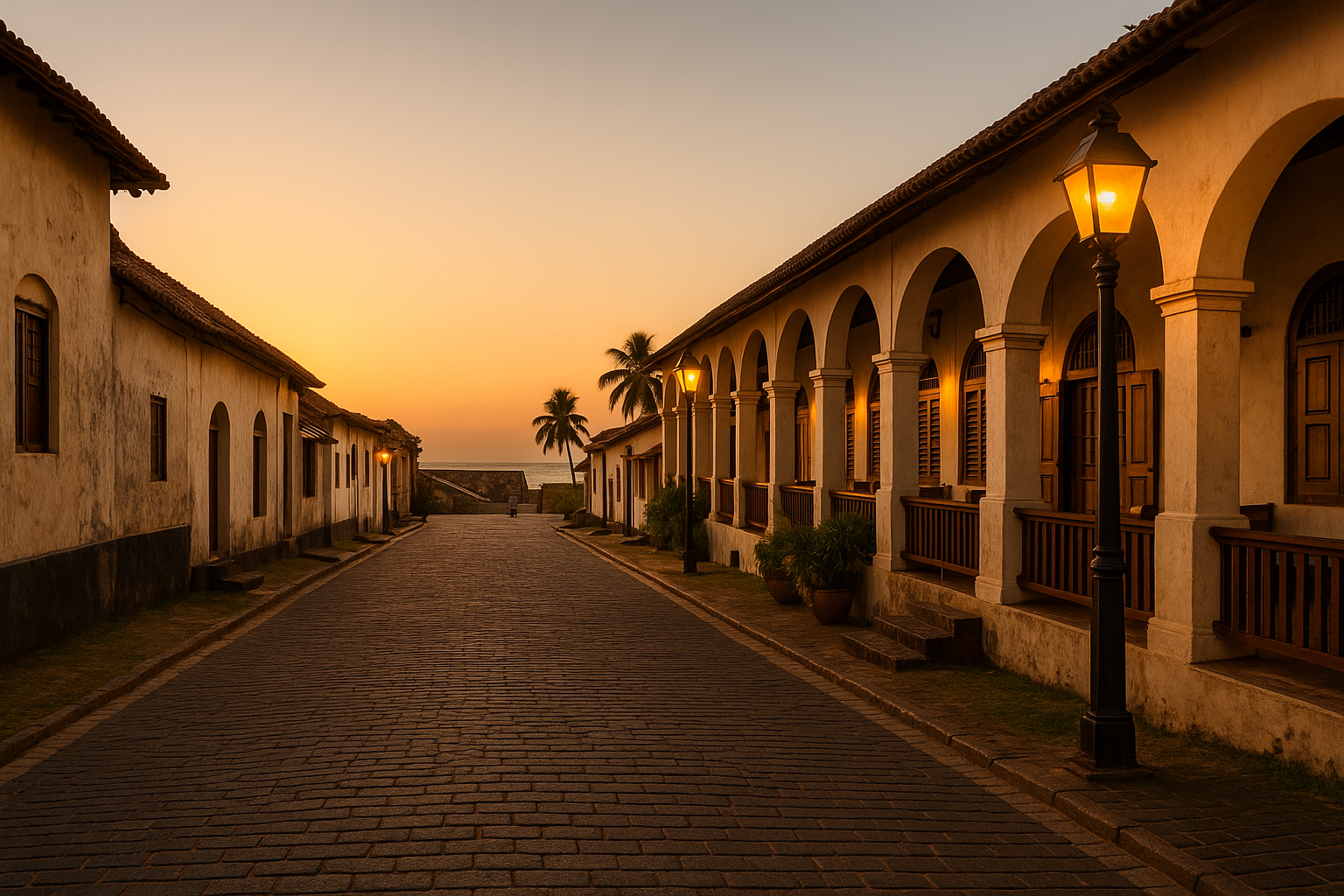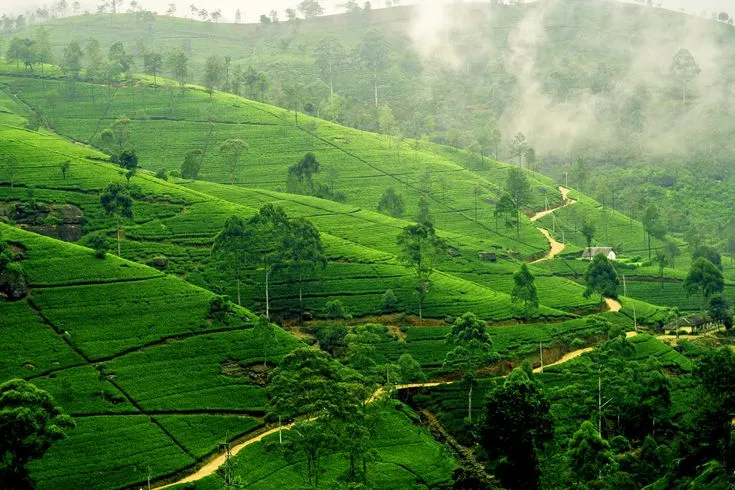Sri Lanka is a land of diverse regions, each with its own distinct rhythm, history, and taste. While the south is known for its golden beaches and bustling fish markets, and the hill country for its tea-scented breezes, the northern peninsula offers something truly unique — a culinary journey deeply rooted in heritage, resilience, and flavor(Jaffna Flavors). Welcome to Jaffna — where every meal is a map of memory, migration, and identity.
A Culture Preserved Through Food
Jaffna’s cuisine is more than just nourishment — it’s a storytelling tradition. Influenced by Tamil culture, age-old Hindu customs, South Indian flavors, and the maritime nature of the region, Jaffna’s food is often bold, aromatic, and unapologetically spicy. But more than that, it’s a way to understand a region that has experienced both glory and hardship, yet never let go of its vibrant spirit.
For travelers seeking authentic experiences, exploring Jaffna through its cuisine is a deeply rewarding path. From fiery crab curries to delicate palmyra jaggery sweets, every dish in Jaffna tells a story.
Spices That Speak Volumes
Unlike the creamy curries of the south or the coconut-heavy dishes of the western coast, Jaffna’s food packs an unmistakable punch. The key lies in its spice blend — locally referred to as Jaffna curry powder. Made at home or purchased from tiny spice stores in town, this mix typically includes roasted dry chillies, coriander seeds, fennel, cumin, fenugreek, and black pepper. Each household may have its own ratio and secret touch, often passed down through generations.
This spice blend is the soul of many signature dishes and gives Jaffna food its deep color, complex aroma, and heat that lingers pleasantly on the palate.



Must-Try Dishes in Jaffna
1. Jaffna Crab Curry (Nandu Kulambu)
Arguably the crown jewel of Jaffna cuisine, this spicy, tomato-rich curry is made with lagoon crabs, freshly ground spices, and tamarind for tang. It’s often served with rice or pittu (steamed cylinders of rice flour and coconut). If you’re adventurous, eat it the local way — with your hands, cracking the shells and savoring the curry-soaked flesh.
2. Pittu and Sothi
A breakfast or light lunch favorite, sothi is a mild coconut milk gravy made with garlic, onion, green chilies, and turmeric. When paired with pittu, it provides a gentle balance to the otherwise intense spice palette of the region.
3. Kool – The Northern Seafood Stew
Kool is a thick seafood broth that showcases Jaffna’s coastal abundance. It includes cuttlefish, prawns, crab, and sometimes fish, along with long beans, jackfruit seeds, and odiyal flour (made from palmyra root) to thicken it. It’s comfort food for the locals — rich, filling, and layered in taste.
4. Dosa and Jaffna-style Sambol
While dosa is found throughout the island, the Jaffna sambols — especially coconut, onion, and dried chili blends — have a distinct kick. You’ll often find dosas served in roadside eateries or early-morning homes with sambol and sambar as staple accompaniments.
5. Jaggery-Based Sweets
Palmyrah trees are iconic in the north, and their products — especially karupatti (palm jaggery) — are used to make traditional sweets like panangkarkandu payasam and thala guli (sesame-jaggery balls). These are not only tasty but also considered energy-boosting and healthy.



Where to Eat: Jaffna’s Culinary Hotspots
Jaffna has slowly emerged as a hub for food-focused travelers, and while the town may not have fine-dining spots, it boasts authentic eateries that serve soul-satisfying meals.
- Mangos Restaurant (Nallur): A clean, vegetarian favorite located close to Nallur Kovil. Try the thali meal here for a well-rounded taste of northern veg cuisine.
- Malayan Cafe: One of the oldest eateries in Jaffna, known for its dosas, vadas, and quick vegetarian bites — all served on banana leaves.
- Hotel Rolex: A local legend, this casual place is famous for crab curry, mutton dishes, and a bustling evening crowd.
- Cosy Restaurant: For those seeking a mix of Jaffna and general Sri Lankan cuisine, this family-style restaurant offers everything from biryani to kool.
- Palmyrah House (Mannar/Jaffna): A slightly upscale option with well-prepared traditional dishes in a calm setting.
Markets, Produce, and the Palmyrah Connection
Jaffna’s markets are a sensory explosion — piles of dry red chilies, local beans, rice varieties like ponni, and baskets of palmyrah fruit. The palmyrah is not just a tree; it’s a lifeline. Locals use its fruit, roots, sap, and leaves — everything from making toddy (a mildly alcoholic drink) to producing jaggery and weaving mats.
When you visit Jaffna, take a stroll through the Jaffna Market near the central bus stand. You’ll see women selling homemade spice mixes, fried snacks, dried fish, and medicinal herbs.
Cooking with the Locals
For the food-curious traveler, several homestays and local initiatives now offer cooking experiences. These aren’t commercial classes — they’re often hosted by grandmothers or home cooks willing to share recipes handed down for generations.
Expect to grind spices on stone slabs, learn the art of tempering with curry leaves and mustard seeds, and taste the difference between chili heat and spice warmth. Many travelers say this is the most memorable part of their visit.
The Vegetarian Side of Jaffna
While seafood and mutton are widely used, Jaffna also offers a diverse vegetarian repertoire. From jackfruit curries to spicy lentil stews (kootu), from fried brinjal to ash gourd pachadi, there’s plenty for plant-based eaters. Many dishes are rooted in Saivite Hindu traditions, especially during temple festivals and fasting days.
Festival Foods and Ritual Flavors
Food in Jaffna is deeply intertwined with ritual. During Thai Pongal, sweet pongal (rice cooked with jaggery and ghee) is offered to the sun god. During temple festivals, large-scale cooking of vegetarian meals feeds hundreds of devotees(Jaffna Flavors). Even weddings have their own symbolic dishes — like idiyappam, kiri bath, and sweet laddu.
If your trip coincides with a local festival, try to attend. You’ll experience food not just as a meal, but as a spiritual offering, an act of community, and a celebration of identity.
Food as Resistance and Resilience
Jaffna’s cuisine also carries the weight of history. Years of conflict and isolation meant that food became a form of resistance — keeping culture alive when access was limited. Simple dishes made with limited ingredients became symbols of creativity and endurance(Jaffna Flavors). Even today, cooking and sharing traditional meals is seen by many as an act of preserving identity.



Tips for Travelers
- Be open to spice – Jaffna food tends to be spicier than what you might find elsewhere. Ask for milder options if needed.
- Try local produce – Palmyrah fruit, local bananas, dry red chilies, and homemade spice powders make great edible souvenirs(Jaffna Flavors).
- Eat with your hands – It’s how the locals do it, especially with rice-based meals. It enhances the taste and the experience.
- Respect meal times – Many places serve lunch until 2 PM and close by 9 PM. Plan your food stops accordingly.
In Conclusion – Jaffna Flavors
To travel in Jaffna is to travel through taste — each dish a story, each bite a bridge between the past and present(Jaffna Flavors). From its ancient spice routes to its humble homestyle meals, Jaffna invites you not just to visit, but to understand.
Whether you’re walking through the local market, dining at a small eatery, or sharing a meal with a family, Jaffna’s cuisine promises to leave you with more than a full stomach — it offers connection, culture, and the kind of hospitality that stays with you long after the spice has faded(Jaffna Flavors).



